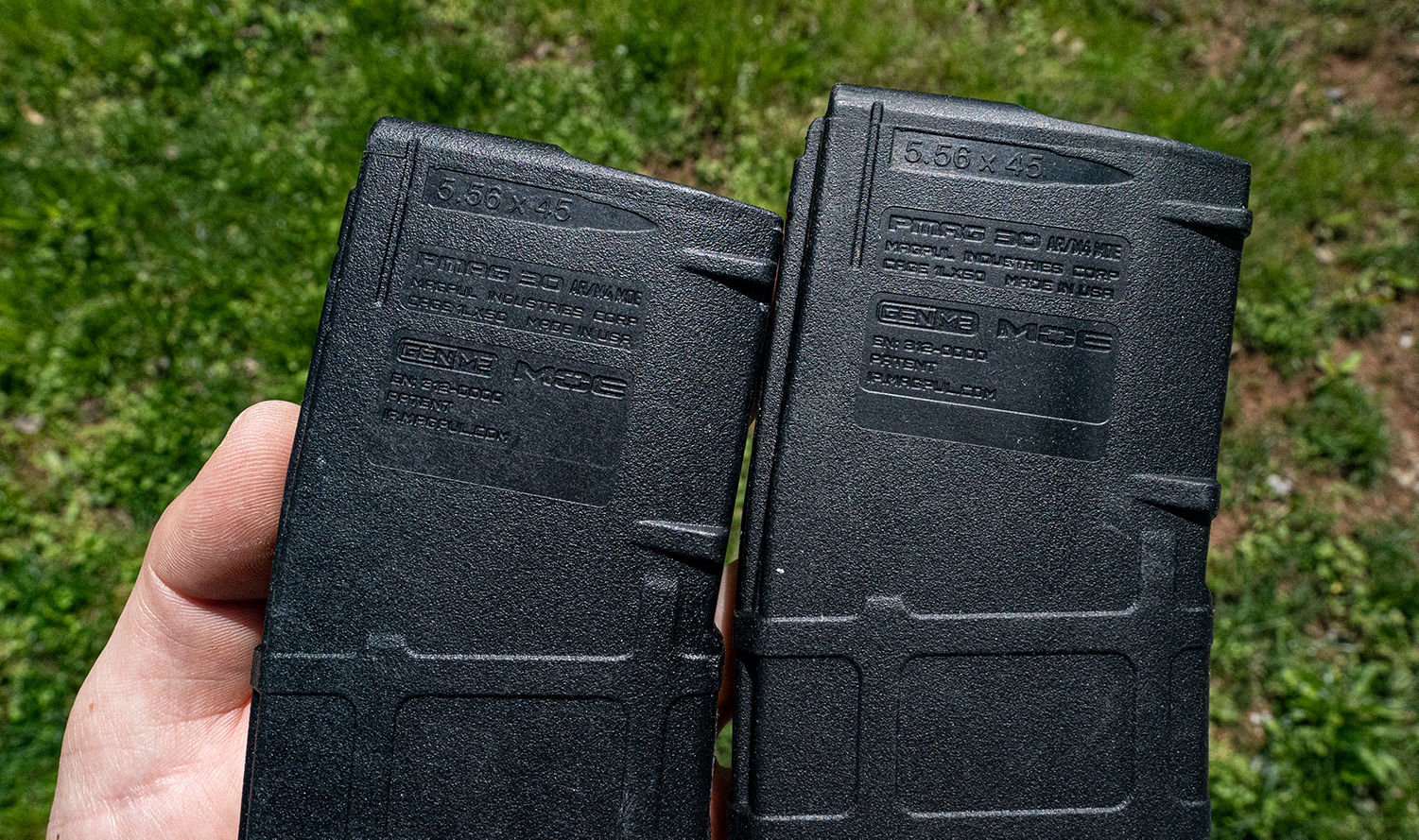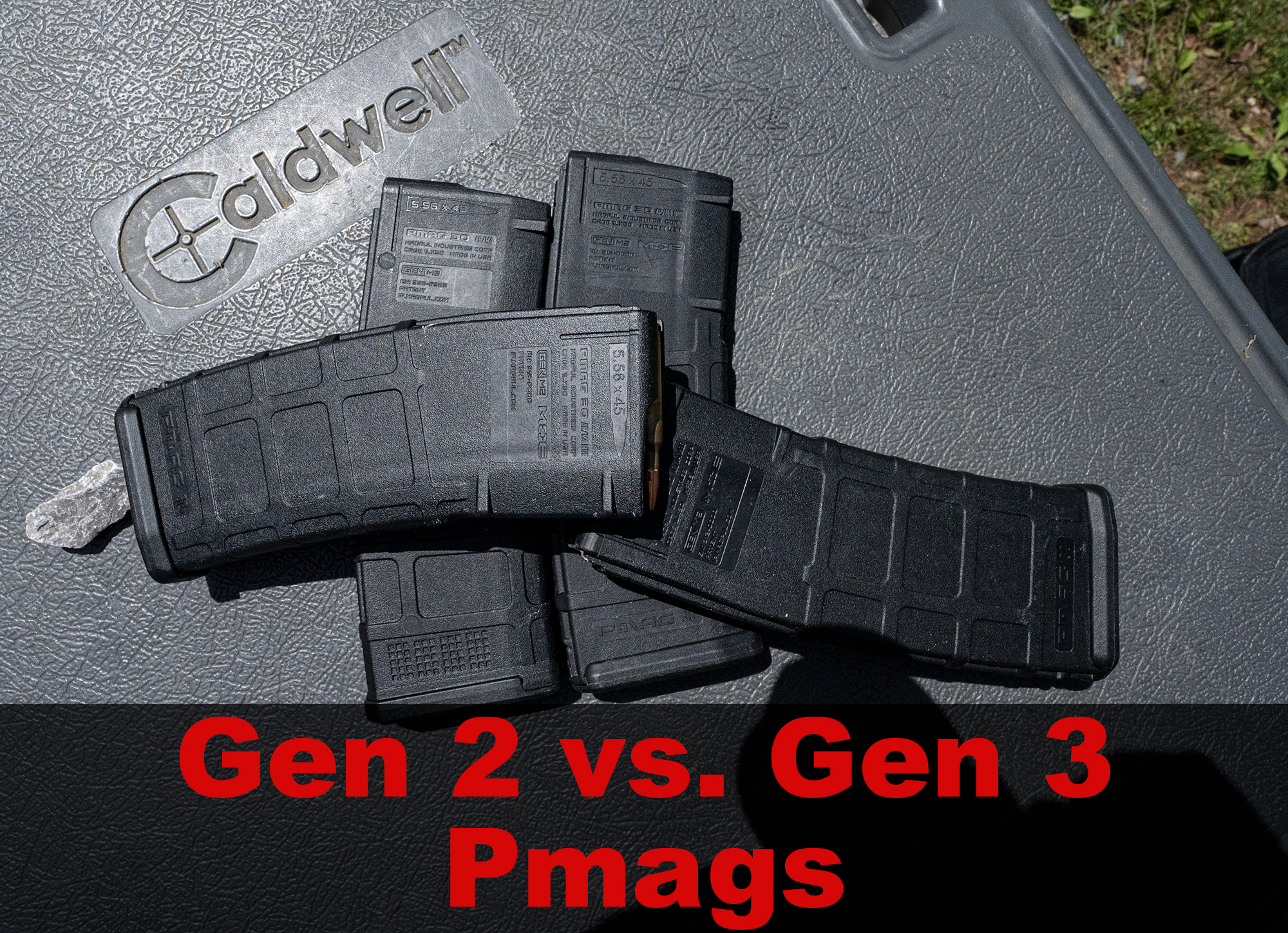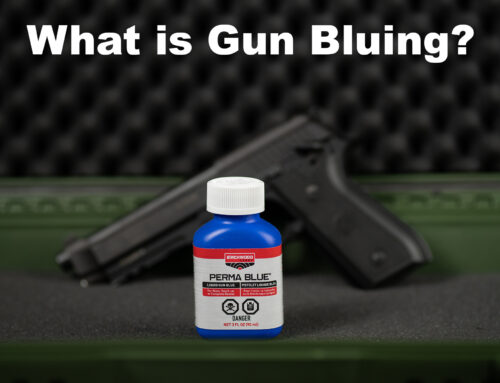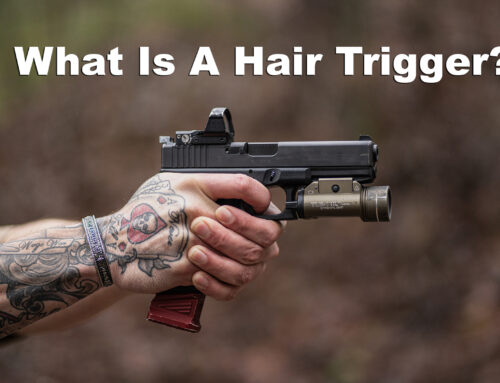Did Magpul invent the polymer rifle magazine? Not at all. The Steyr AUG, an Austrian bullpup with a translucent polymer magazine, went into production over two decades before Magpul got their first patent in 2001. But Magpul’s PMAG was the first successful polymer AR-15 mag thanks to two simple qualities: affordability and reliability.
Although other great American polymer mag manufacturers like Hexmag and Amend2 exist, Magpul is the biggest fish in the pond and probably always will be. Many shooters consider their PMAG the gold standard – law enforcement professionals and military personnel included.
But the PMAG’s popularity leaves many newer shooters wondering: What is the difference between the Gen 2 vs Gen 3 PMAG? Why does Magpul even bother continuing to offer the Gen 2, which it stands to reason must be obsolete?
The short answer to those questions is that the Gen 2 is cheaper. Not by much – often by about $5. Magpul gets a bigger share of the market by offering a more affordable alternative to their latest polymer mag.
Gen 2 vs Gen 3 Pmags

So, what are the performance differences between a Gen 2 and Gen 3 PMAG? There are quite a few!
The Gen 3 Includes a Dust Cover
The Gen 3 comes with a dust cover. This handy mag accessory doesn’t just keep dirt and other debris from reaching loaded ammo. It also prevents damage to the PMAG’s feed lips while it’s in storage or transit.
Dust covers for the Gen 2 are available but sold separately. But take care – Gen 2 dust covers are not compatible with Gen 3 PMAGs, and vice versa!
The Gen 3 Is More Durable
The polymer Magpul uses to make Gen 3 PMAGs is a little tougher. This isn’t to suggest that you have to treat a Gen 2 like it’s made out of eggshells, but a Gen 3 can shrug off significantly more damage from impact and stress over the course of its long lifetime.
The Gen 3 Has a More Reliable Follower

The follower is the part of the magazine which pushes against the last round that will be fired. The Gen 3’s follower has an improved anti-tilt design that enhances functionality, although the Gen 2’s follower is so reliable that the older design is still not likely to ever fail you (so long as the PMAG is in good condition).
The Gen 3 Has an Over-Insertion Tab
Sometimes a shooter has to reload their AR-15 in an awful hurry. When they aggressively slam a Gen 3 into their rifle, its integral tab helps to prevent over-insertion that could cause a failure to feed.
The Gen 3 Has a Dot Matrix Panel
Magpul’s dot matrix panel is four 5×3 grids formed by small square impressions. This lets you use a paint pen to personalize your PMAG however you see fit. Use it to distinguish the PMAGs you’d use for training from the ones you’d trust on duty, or if you keep different types of ammo loaded. It’s also handy for keeping your so-called “friends” from taking off with your PMAG!
The Gen 3 Is More Aggressively Textured
Put a Gen 2 and Gen 3 side by side and you’ll notice the newer model has many more ridges on its front and spine. These facilitate positive handling, and especially help out when you’re swapping mags with gloved or sweaty hands. Dropping a mag while you’re reloading makes you look like a nerd at best. At worst it makes you dead as disco!
The Gen 3 Has a Narrower Baseplate
The Gen 3’s smaller baseplate makes it easier to fit multiple PMAGs in a mag pouch. This comes at a tradeoff, because the Gen 2’s wider baseplate is easier to grab onto – especially while you’re in a hurry.
The Gen 3 Is More Compatible With Certain Rifles
A PMAG designed for the AR-15 isn’t exclusively compatible with AR-15 rifles. The Gen 3’s geometry and internal workings make it more reliable with rifles like the SCAR 16S, the HK 416, and the M27 Infantry Automatic Rifle.
Because the Gen 2 Pmag lacks the Gen 3’s bigger feed lip that is designed to prevent overtravel, it is often more reliable with higher-quality AR-15 lowers. The Gen 3 typically works just fine with these as well, however.
The Takeaway on Gen 2 vs Gen 3 Pmags
When you get a Gen 3 PMAG instead of a Gen 2, you get a more durable AR-15 magazine with a dust cover, dot matrix panel, over-insertion tab, narrower baseplate, more reliable follower, and more aggressive texturing. And you pay more for these added quality of life features, too. So, what are you using your magazine for? Is it your bug out bag where performance is critical? Is it just a range training magazine where a failure is tolerable to save a few bucks? Those are some of the questions you need to answer before you select a dog in this Gen 2 vs Gen 3 pmags fight.






Leave A Comment